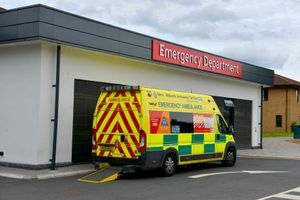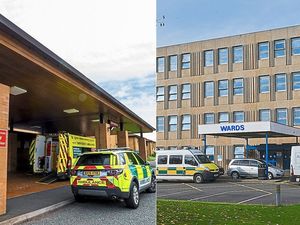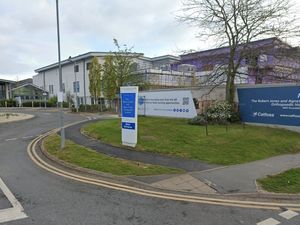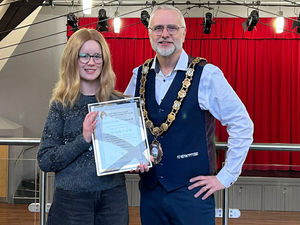Shropshire hospitals crisis: 17 children left Shropshire A&E without being seen during inspection
Inspectors found that 17 children left A&E without being seen by medical staff due to a long wait, as details emerged of the reasons for urgent safety measures at the county’s major hospitals.

The Care Quality Commission, which inspects hospitals across the country, has released reports detailing its findings from unannounced focused inspections at A&E departments at Royal Shrewsbury Hospital (RSH) and Princess Royal Hospital (PRH) Telford.
The inspections took place in April but details of the enforcement action – taken to keep patients safe – emerged in May when they were leaked.
Now the detailed reasons behind the action have been revealed with Professor Ted Baker, Chief Inspector of Hospitals, saying: “We still have concerns about the emergency departments at the Princess Royal Hospital and Royal Shrewsbury Hospital.”
Shrewsbury and Telford Hospital NHS Trust (Sath), which manages the hospitals, has apologised for the failings and said that a number of improvements and measures have been taken since the inspection.
They include agreeing to spend £1million on new staff, extra nurses to ensure children are seen within 15 minutes, and employing four new paediatric nurses.
Sath has been under extreme pressure in recent months and was placed in special measures following a damning inspection last year.
Possible signs of sepsis
At that point the CQC rated the trust as inadequate. In the months since the inspection the trust’s chief executive also resigned – initially saying he was taking another NHS job, before instead deciding to take time out with his family. It has now emerged that when inspectors visited the hospitals over two days in April, 17 children were allowed to leave the A&E departments without being seen.
The details show that some of those children presented with possible signs of sepsis, while another had a possible “foreign body” in their throat.
The report states: “The management of children was poor. There was no clearly defined escalation or prioritisation protocol.”
“Increased demand for services meant children were leaving the department without being seen and without having received appropriate clinical assessments.”

It added: “During this inspection, we were informed that between 13 and 14 April 2019, 11 children attended the emergency department and subsequently left without being seen due to long waits in the emergency pathway.
“We reviewed the case notes for each of the 11 children. Of those reviewed, only one patient had had any form of initial triage recorded despite children presenting with possible signs of sepsis including but not limited to a high temperature or rash. We noted that one child presented with a possible foreign body in their throat; whilst the case was considered by the streaming nurse, there had been no formalised triage of the child and no observations recorded.
“Three children aged one year or under presented with a history of fever. A review of case notes confirmed no triage or observations had been completed for those children who subsequently left the department without being seen.”
As a result the trust was ordered to put a system in place to ensure all children who visited the A&E were assessed within 15 minutes.
Staffing pressure
In another instance inspectors were critical of a failure to consider whether a young woman was suffering from an ectopic pregnancy – which can result in death.
The report said: “A young female presented at the early stages of pregnancy with a two-day history of lower abdominal pain. Whilst an initial set of observations were recorded and an early warning score of 0 logged on the patient’s urgent and emergency services record, the individual left the department without being seen.
“There was no consideration that this individual may have been experiencing an ectopic pregnancy which could have resulted in significant harm or death if left untreated.”
The inspection also throws a light on the staffing pressures at the hospitals with the CQC finding there were not enough sick children’s nurses to cover every shift. The report states: “Despite The Princess Royal Hospital being the regional designated children’s hospital there was not sufficient registered sick children’s nurse to cover every shift. A the time of the inspection, the trust had three children’s nurses employed to support both the emergency departments.”The CQC also revealed that the issue was one highlighted before, but it had not been addressed. The report said: “We had previously raised this as an area of concern. Despite CQC raising these concerns, the trust had continued to fail to ensure that those nursing staff designated to care for children, were sufficiently competent.”The issue of patients being treated on trollies was also highlighted – with one instance where male patients had been expected to provide urine samples while on trollies in corridors.
The report said: “Due to the congestion within the department, there were occasions when patients were being nursed in corridors. In most cases, patients were covered with blankets and their personal needs were reported to be met. However, we noted on one occasion when a member of nursing staff had provided two male patients with urine bottles with an expectation the patients urinated whilst laying on trolleys in the main corridor.
“The inspection team interjected and requested the nurse found a more appropriate setting which would ensure the privacy and dignity of both patients; this could have included transferring the patients to a vacant cubicle in the closed clinical decision unit. We raised our concerns over this lack of foresight to the nurse in charge of the department.”
Inspectors have also revealed serious concerns from frontline staff over the trust’s senior management, who said they did not feel their concerns were listened to.
The report said: “We had previously reported frustrations amongst the workforce regarding the fact frontline staff did not feel they were listened to by senior members of the executive team.
“These frustrations remained present at this inspection. Visibility of trust leadership was reported to be poor. We noted the medical director was present in the emergency department on the day of the inspection. Local staff reported the medical director had been requested to attend the department because of the significant concerns local staff had over the safety and welfare of patients and so their presence was by exception rather than rule.
“Local staff reported site management teams poorly understood the emergency pathway. The focus for the trust was reported to be based on operational performance as compared to the safety and quality of services being the driving force.”
As a result of the findings the CQC has introduced a number of conditions. It also requires the trust to provide weekly updates, detailing progress against the steps it has instructed the trust take. Professor Baker said: “We will continue to monitor the trust extremely closely, and continue to work with NHS England and NHS Improvement to secure the required improvements. We will return to check whether sufficient improvements have been made, and we will not hesitate to take further action if needed.”
Improvements have been made since inspection, say hospital bosses
Barbara Beal, director of nursing, midwifery and quality at Sath, said: “Following the focussed inspection of our emergency departments by the CQC in April our teams, working with our healthcare partners, have made a series of significant improvements for both our patients and our staff.
“We recognise the areas of concern highlighted by the CQC and are sorry we were not able to make improvements more quickly. We are working with our staff, clinicians, and regulators, including CQC, to increase the pace of our improvements to provide a greater level of confidence and assurance.
“Some of the work we are doing is ongoing and we expect to see further improvements over the coming months.”
Work highlighted by the trust includes approving spending of more than £1 million on extra staff for the A&E departments, recruiting more nurses to ensure children are seen in A&E within 15 minutes of arrival, and employing four new paediatric nurses with two more due to start in September.
The trust said it was also appointing 13 registered nurses in the A&E departments with an additional 13 newly qualified nurses due to start in September.
Improved
The trust has said that some areas were found to have improved, including junior doctors speaking positively about working in the A&E and that consultants were "supportive and always accessible".
There has also been an increase of Band 6 nursing staff and the appointment of four substantive consultants – which was considered as positive by staff
Another measure has seen staff given access to a sepsis trolley which had step-by-step guidance and equipment needed for dealing with suspected Sepsis patients, and a doctor identified daily to carry a dedicated Sepsis bleep to respond quickly to suspected cases
Ms Beal said: “We are continuing to work hard to not only implement improvements, but to ensure they become embedded. There have been some significant changes to strengthen the executive and senior leadership teams since this inspection was carried out and we are focussed on making Sath the best it can be for patients, visitors and staff.
“Our workforce remains a major issue for us, but we are making some progress in this area. We have recently secured an additional 50 nurses across all departments in our hospitals and interviewed a further 90 last week.
“Although we have also improved recruitment in our emergency departments, this is an area that remains fragile, particularly in respect of middle-tier doctors and is an area which we will continue to focus on.”




